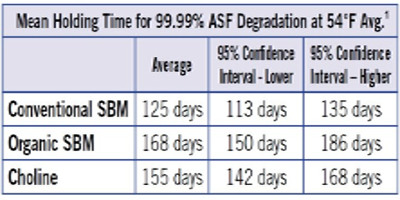Studies have shown the theoretical ability for swine viruses to be transmitted through feed and feedstuffs. Ongoing research caused the Swine Health Information Center (SHIC), the National Pork Board, the National Pork Producers Council, and the American Association of Swine Veterinarians to offer updated and revised information for feed holding times to mitigate virus transmission. Feed component holding times could be one tool used in conjunction with other mitigations to enhance feed safety. Sourcing feed components from regions or countries of the world that don’t have ASF, or other diseases foreign to the US, will also negate potential risk.
The Institute for Feed Education and Research (IFEEDER), the public charity of the American Feed Industry Association, helped fund the initial research providing the best understanding of viral survivability in feedstuffs and details for mitigating risk to domestic herds via holding times, based on using Senecavirus A in the model.
The initial estimations, which were calculated in October 2018 then updated the first time in May 2019, now reflect new information from work done on African swine fever (ASF) half-life. Based on the conditions of transoceanic shipment from Asia, the following table displays the mean holding times calculated to provide 99.99% ASF degradation at 54 degrees F (average).

The information shows holding times details for general informational and educational purposes. They should not be considered as to be recommending or advocating any specific course of action. This information will be consistently reviewed and updated for the benefit of the US swine industry.
Click here to see more...